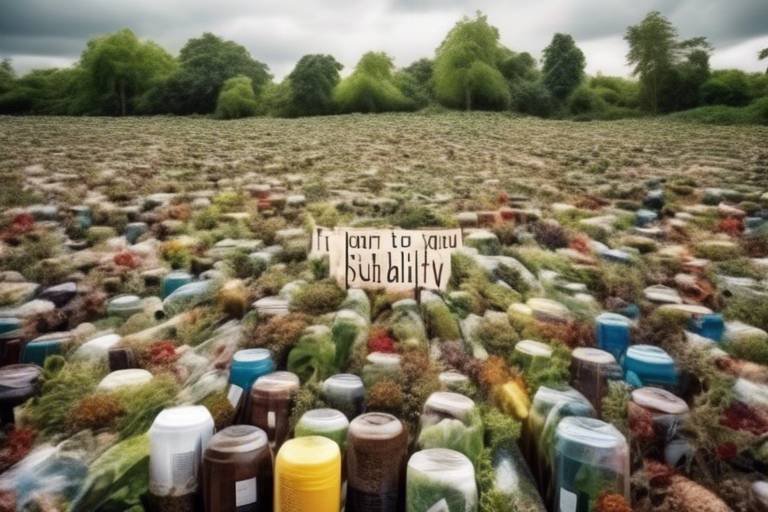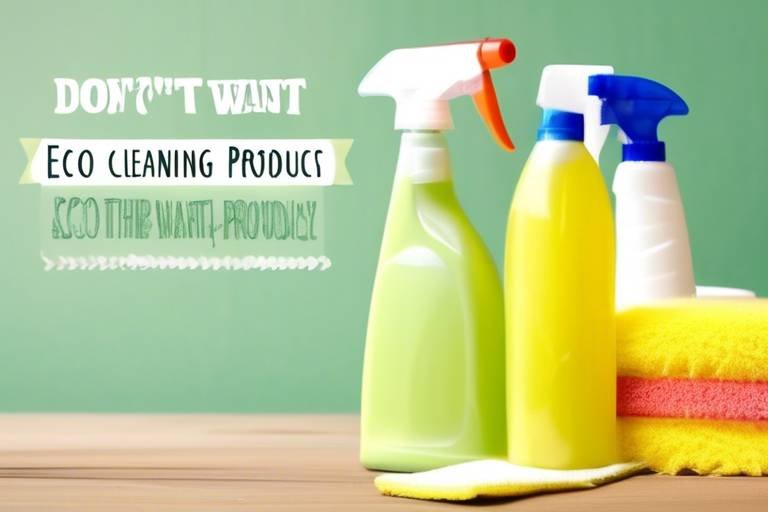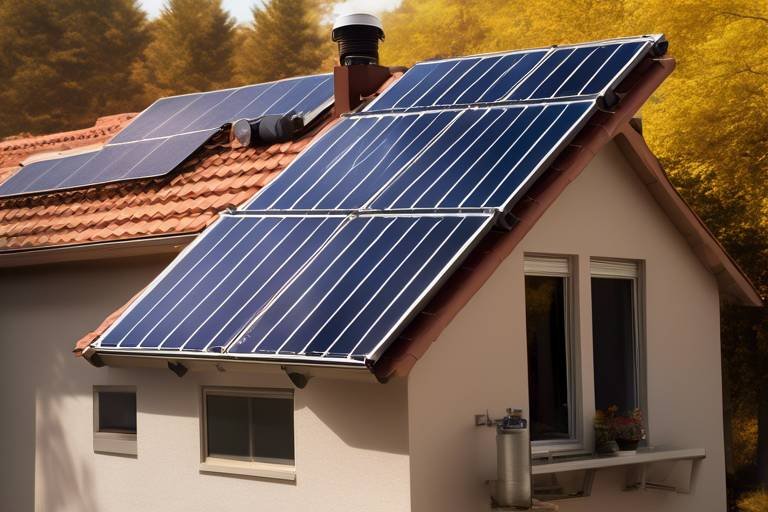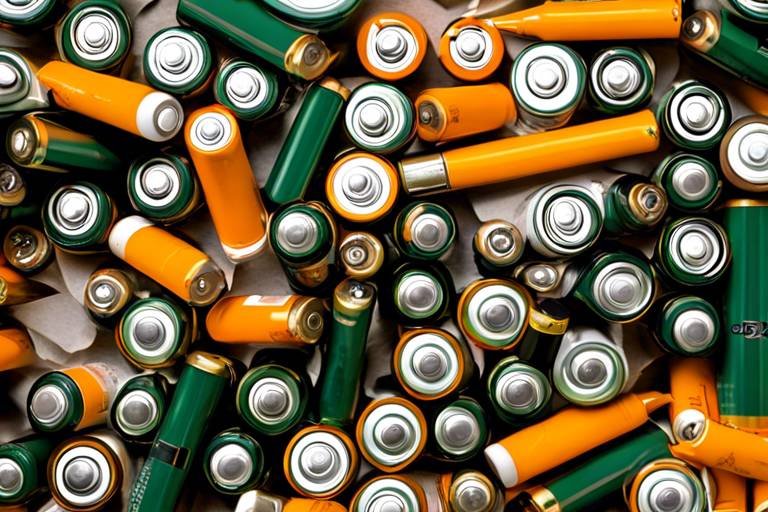The Benefits of Using a Rainwater Collection System
Have you ever looked up at the sky and wondered why we let all that precious rainwater go to waste? Implementing a rainwater collection system can transform that question into action, offering a multitude of benefits that not only enhance our lives but also protect our planet. In a world where sustainability is becoming increasingly important, rainwater harvesting stands out as a practical solution that can make a significant difference. By capturing and utilizing rainwater, we can create a more sustainable future while enjoying numerous environmental, economic, and practical advantages.
One of the most compelling reasons to adopt a rainwater collection system is its positive environmental impact. When we collect rainwater, we significantly reduce runoff and erosion, which are major contributors to water pollution and habitat destruction. Instead of allowing rain to flow into storm drains and eventually into rivers and lakes, we can capture it and use it wisely. This practice promotes better water management and conservation, allowing us to minimize our ecological footprint. By utilizing this natural resource, we not only help to conserve water but also enhance local ecosystems that thrive on balanced water levels.
Let’s talk money! Implementing a rainwater collection system can lead to substantial savings on your water bills. Homeowners can reduce their reliance on the municipal water supply, making it a financially wise investment in the long run. Imagine the relief of seeing your utility bills drop as you harvest rainwater for your everyday needs. This reduction in water usage translates to significant financial benefits over time, especially in areas where water rates are high. Think of it as a way to keep more cash in your pocket while doing your part for the environment.
By harvesting rainwater, households can enjoy lower utility costs. For example, consider this: if your household uses an average of 10,000 gallons of water per month, and you can replace a portion of that with harvested rainwater, the savings can quickly add up. This means more money for the things you love, whether it's a family vacation or that new gadget you've been eyeing. It's a win-win situation!
While the initial setup costs may seem high, ongoing maintenance expenses for rainwater systems are generally low. Most systems require minimal upkeep, making them an economical choice for long-term water management. Just think about it—once you set it up, you can sit back and enjoy the benefits without worrying about constant repairs or high maintenance fees.
To sweeten the deal, many regions offer financial incentives or rebates for installing rainwater collection systems. These programs can significantly enhance the cost-effectiveness of these environmentally friendly practices. So, not only do you save on your bills, but you can also benefit from government support aimed at promoting sustainability. It's like getting paid to do the right thing!
Rainwater isn’t just for watering plants; it can be used for a variety of purposes, including irrigation, flushing toilets, and washing clothes. This versatility makes it an invaluable resource for households and businesses alike. You can even use rainwater for non-potable applications, which reduces the strain on your municipal water supply. Imagine being able to wash your car or water your garden without impacting your water bill!
Another fantastic aspect of rainwater collection is that rainwater is naturally soft and often free from many contaminants found in groundwater or municipal supplies. When properly filtered and stored, it can be a high-quality water source for various uses. This means you can enjoy the peace of mind that comes with knowing you’re using clean, safe water for your household needs.
Implementing effective filtration systems ensures that collected rainwater is safe for household use. By investing in a good filtration system, you enhance the quality and usability of rainwater for drinking, cooking, and cleaning. It’s like turning rain into liquid gold for your home!
Using rainwater can also reduce your exposure to chlorine and other chemicals commonly found in treated water. By opting for rainwater, you promote better health and well-being for your family and community. It’s a simple yet powerful way to improve your quality of life.
Finally, rainwater collection systems can foster community resilience. By reducing demand on local water supplies, especially during droughts, these systems encourage sustainable practices among neighbors. It’s about creating a culture of conservation that benefits everyone. When we work together to manage our resources wisely, we can build stronger, more resilient communities.
- What is a rainwater collection system? A rainwater collection system captures and stores rainwater for various uses, such as irrigation and household needs.
- Is rainwater safe to drink? Yes, when properly filtered and treated, rainwater can be safe for drinking.
- How much can I save on my water bill? Savings vary, but many households see a significant reduction in their water bills by using harvested rainwater.
- Are there any maintenance costs? While initial setup can be costly, maintenance is generally low, making it a cost-effective long-term solution.

Environmental Impact
When we think about the of our daily choices, it's hard not to consider the profound benefits of rainwater collection systems. These systems play a crucial role in managing water resources more effectively. By capturing rainwater, we significantly reduce runoff, which is a major contributor to soil erosion and water pollution. Imagine a heavy rainstorm where instead of water rushing off into the streets, it gets collected and utilized. This simple shift in how we handle rain can make a world of difference.
Moreover, rainwater harvesting promotes better water management practices. When we collect rainwater, we are not just saving it for ourselves; we are also helping to replenish local aquifers and maintain the natural water cycle. This is especially vital in urban areas where impervious surfaces like roads and buildings prevent water from soaking into the ground. By redirecting rainwater from these surfaces, we can enhance the health of our local ecosystems, allowing plants and wildlife to thrive.
Another fascinating aspect of rainwater collection is its ability to minimize our ecological footprint. By relying on a natural resource that falls from the sky, we decrease the demand on municipal water systems, which often rely on energy-intensive processes for water treatment and distribution. Think about it: every drop of rain that we catch and use is a drop that doesn’t need to be pumped from a distant reservoir, treated with chemicals, and transported through miles of piping. This not only conserves energy but also reduces greenhouse gas emissions associated with water supply systems.
To illustrate the environmental benefits further, consider the following table that outlines the key advantages of rainwater collection systems:
| Benefit | Description |
|---|---|
| Reduced Runoff | Minimizes flooding and erosion by capturing rainwater. |
| Enhanced Water Quality | Prevents pollutants from entering local waterways. |
| Conservation of Resources | Reduces the demand on municipal water supplies. |
| Support for Biodiversity | Helps maintain local ecosystems and habitats. |
In conclusion, implementing a rainwater collection system is not just a personal choice; it's a commitment to environmental stewardship. By embracing this practice, we can contribute to a healthier planet, foster sustainable living, and inspire others in our communities to do the same. After all, every little bit helps when it comes to protecting our precious natural resources.

Cost Savings
Implementing a rainwater collection system can lead to substantial savings on water bills. Imagine a world where you don't have to worry about skyrocketing water rates every summer. By harvesting rainwater, households can enjoy lower utility costs. This reduction in water usage translates to significant financial benefits over time, especially in areas with high water rates. Think of it as a financial cushion; the more you save on water, the more you can invest in other areas of your life, whether that's renovating your home or planning that dream vacation.
When you consider the initial costs of setting up a rainwater collection system, it might seem a bit daunting. However, let’s break it down. While the upfront investment can be considerable, the long-term savings often outweigh these initial expenditures. For instance, a typical rainwater harvesting system can collect thousands of gallons of water each year, which can drastically lower your dependency on municipal water supply. In fact, many homeowners report a reduction of up to 50% in their water bills after installing such systems. Just imagine using that extra cash for something fun!
Moreover, ongoing maintenance expenses for rainwater systems are generally low, making them an economical choice for long-term water management. Unlike traditional plumbing systems that can require frequent repairs and updates, a well-designed rainwater collection system can last for years with minimal upkeep. Most homeowners find that routine cleaning of the gutters and occasional inspection of the storage tank keeps everything running smoothly.
And let’s not forget about the financial incentives that many regions offer. These can come in the form of rebates, tax deductions, or even grants for installing rainwater collection systems. Such incentives can significantly offset the initial setup costs, making it even more appealing. For example, a local government might offer a rebate of up to 30% of the installation cost, which can turn a hefty investment into a manageable one. Here’s a quick look at how these incentives can impact your overall savings:
| Incentive Type | Potential Savings |
|---|---|
| Installation Rebate | Up to 30% of costs |
| Tax Credits | Varies by state |
| Grants for Low-Income Households | Up to $1,500 |
In summary, the financial benefits of a rainwater collection system are clear. With reduced water bills, low maintenance costs, and available incentives, it’s not just a sustainable choice; it’s a smart financial decision. So why not take the plunge? You could be saving money while making a positive impact on the environment. And who wouldn’t want to be a part of that?
- How much can I save on my water bill with a rainwater collection system?
Many homeowners report savings of up to 50% on their water bills, depending on their usage and local water rates. - What are the initial costs of installing a rainwater collection system?
Initial costs can vary widely, but a typical system can range from $1,500 to $5,000, depending on size and complexity. - Are there any health risks associated with using rainwater?
When properly filtered and treated, rainwater is safe for various uses, including drinking, cooking, and cleaning. - Can I use rainwater for irrigation?
Absolutely! Rainwater is an excellent resource for watering gardens and lawns.

Reduced Water Bills
Imagine a world where your water bills are significantly lower, where you can enjoy the peace of mind that comes with knowing your household expenses are under control. Harvesting rainwater through a collection system can make this dream a reality. By capturing and utilizing the rain that falls on your property, you can drastically reduce your reliance on municipal water supply, which, in many areas, can come with hefty price tags. This means more money in your pocket and less stress at the end of the month.
Let’s break it down a bit. When you use rainwater for irrigation, washing your car, or even flushing toilets, you’re effectively cutting down on the amount of water you need to purchase from your local water provider. In fact, studies show that households can save anywhere from 30% to 50% on their water bills after installing a rainwater collection system. That’s a significant reduction! Consider this: if your average monthly water bill is $100, a savings of 30% means you’d only be paying $70. Over a year, that’s a whopping $360 saved!
Moreover, the savings don’t just stop at your monthly bills. With the ongoing rise in water rates due to various factors like drought and increased demand, using rainwater becomes even more appealing. The less you depend on the municipal supply, the less vulnerable you are to these rising costs. It’s like having your cake and eating it too—you're enjoying the benefits of a sustainable water source while keeping your wallet happy!
However, it’s essential to consider the initial investment in a rainwater collection system. While the upfront costs can be daunting, think of it as planting a seed. With proper care and maintenance, that seed can grow into a flourishing tree that bears fruit for years to come. Over time, the savings from reduced water bills can quickly offset the installation costs. Plus, many regions offer incentives and rebates to help ease the financial burden of setting up these systems. These incentives can further enhance the cost-effectiveness of your investment, making it an even wiser choice.
So, if you’re looking for a way to save money while contributing to a more sustainable future, consider the benefits of a rainwater collection system. Not only will you be reducing your water bills, but you'll also be taking a step towards a greener lifestyle. It’s a win-win situation that benefits your finances and the environment!
- How much can I save on my water bill with a rainwater collection system? Savings can vary, but many households report reductions of 30% to 50% on their bills.
- What are the initial costs of installing a rainwater collection system? Initial costs can vary based on system size and complexity, but they often range from a few hundred to several thousand dollars.
- Are there financial incentives for installing these systems? Yes, many regions offer rebates and incentives to encourage the installation of rainwater collection systems.

System Maintenance Costs
When it comes to implementing a rainwater collection system, many people often wonder about the maintenance costs associated with it. The good news is that while the initial setup may require a bit of investment, the ongoing maintenance costs are generally quite manageable. This makes rainwater systems not just an environmentally friendly option but also a financially savvy choice in the long run. Think of it like buying a high-quality pair of shoes; the upfront cost might be higher, but they last longer and save you money on replacements down the line.
Typically, the maintenance of a rainwater collection system involves a few key components: cleaning the gutters, checking the filtration systems, and inspecting the storage tanks. Most of these tasks can be done by homeowners themselves, which means you won't have to fork out cash for professional services every few months. For instance, a quick check of the gutters can prevent blockages that might lead to overflow, and a simple cleaning of the filters can ensure that the water remains pure and safe for use.
To give you a clearer picture, here’s a brief overview of typical maintenance tasks and their associated costs:
| Maintenance Task | Frequency | Approximate Cost |
|---|---|---|
| Gutter Cleaning | Twice a year | $50 - $100 |
| Filter Replacement | Annual | $20 - $50 |
| Tank Inspection | Once a year | $30 - $70 |
As you can see from the table, the costs are relatively low compared to the savings you’ll achieve on your water bills. Plus, these maintenance tasks can often be completed in just a few hours, making it convenient for busy homeowners. In the grand scheme of things, the investment in maintaining your rainwater collection system is minor compared to the benefits it provides, both financially and environmentally.
Ultimately, the are a small price to pay for the peace of mind that comes from knowing you are contributing to a more sustainable future while also saving money. So, if you’re considering a rainwater collection system, rest assured that the long-term benefits far outweigh the maintenance expenses.
- How often should I clean my rainwater collection system?
It’s recommended to clean the gutters and filters at least twice a year to ensure optimal performance. - What happens if I don’t maintain my system?
Neglecting maintenance can lead to blockages, contamination, and reduced efficiency, which can affect the quality of the water collected. - Are there any warranties on rainwater collection systems?
Many manufacturers offer warranties that cover certain components of the system, so it’s a good idea to check the details before purchasing.

Incentives and Rebates
When it comes to implementing a rainwater collection system, one of the most appealing aspects is the **financial incentives and rebates** that many regions offer. These programs are designed to encourage homeowners and businesses to adopt sustainable practices, making it easier and more affordable to invest in such systems. For instance, local governments and environmental organizations often provide cash rebates for the installation of rainwater harvesting systems, which can significantly offset the initial costs.
Additionally, some utility companies offer **discounts on water bills** for customers who reduce their reliance on municipal water supplies by using harvested rainwater. This not only promotes conservation but also rewards those who take proactive steps toward sustainability. In many cases, these incentives can cover a substantial portion of the installation costs, making the investment more appealing to potential users.
It's important to research the specific programs available in your area, as they can vary widely. Here are a few common types of incentives you might encounter:
- Direct Cash Rebates: These are often provided upfront or as a reimbursement after installation.
- Tax Credits: Some regions allow for tax deductions or credits on the purchase and installation of rainwater systems.
- Low-Interest Loans: Financial institutions may offer loans with favorable terms specifically for sustainable home improvements.
- Educational Grants: Schools and community organizations may receive funding to promote rainwater harvesting, which can indirectly benefit local residents.
Moreover, many states and municipalities have recognized the importance of rainwater harvesting in addressing water scarcity issues. As a result, they have developed comprehensive policies to support and incentivize these systems. This not only helps individual homeowners save money but also contributes to the larger goal of sustainable water management in the community.
In conclusion, taking advantage of these incentives and rebates can make a significant difference in the overall cost of installing a rainwater collection system. By doing your homework and applying for available programs, you can enjoy the benefits of sustainable living while keeping your finances in check.
Q: What types of incentives are available for rainwater collection systems?
A: Incentives can include cash rebates, tax credits, low-interest loans, and educational grants, depending on your location.
Q: How much can I save with a rainwater collection system?
A: Savings vary, but many homeowners see a significant reduction in their water bills, especially in areas with high water rates.
Q: Are there any maintenance costs associated with these systems?
A: While initial setup costs can be high, ongoing maintenance expenses are generally low, making them an economical choice.
Q: Is rainwater safe for household use?
A: Yes, with proper filtration and storage, rainwater can be a high-quality source of water for various household uses.

Usage Versatility
One of the most compelling reasons to implement a rainwater collection system is its remarkable versatility. Rainwater can serve a multitude of purposes, making it an incredibly valuable resource for both households and businesses. Imagine having a source of water that you can use for everything from irrigating your garden to flushing toilets and even washing clothes. The possibilities are nearly endless!
For homeowners, utilizing rainwater for irrigation can lead to lush gardens and healthier plants, especially during dry spells when municipal water might be restricted. With the rising costs of water and the increasing frequency of droughts, harvesting rainwater for irrigation not only conserves resources but also saves money. In fact, studies have shown that using rainwater for landscaping can reduce water bills significantly, especially for those with extensive gardens or lawns.
Additionally, rainwater can be used for non-potable applications, such as flushing toilets. This is a smart way to cut down on the amount of treated water used in your home. Toilets account for a significant portion of indoor water use—up to 30% in some households! By switching to rainwater for this purpose, families can drastically reduce their reliance on municipal water supplies.
Another practical application is using rainwater for washing clothes. Rainwater is naturally soft, which means it doesn't contain the hard minerals found in many municipal supplies. This softness can lead to cleaner clothes and less wear and tear on your washing machine. It’s like giving your laundry a spa day every time you wash!
To put it simply, the versatility of rainwater usage can be summarized as follows:
- Irrigation: Watering gardens and lawns.
- Toilet Flushing: Reducing municipal water use.
- Household Cleaning: Washing clothes and cleaning surfaces.
- Outdoor Cleaning: Washing cars and outdoor furniture.
By employing a rainwater collection system, you're not just saving water; you're also embracing a more sustainable lifestyle that can benefit both your wallet and the environment. The ability to use rainwater for various applications makes it an invaluable resource, making every drop count.
As more people recognize the benefits of rainwater collection, communities can also see a shift toward sustainability. Imagine neighborhoods where everyone is using rainwater for their gardens, toilets, and more—lessening the burden on local water supplies and fostering a sense of community responsibility. In a world where water scarcity is becoming an alarming reality, rainwater collection systems offer a practical solution that can lead to both individual savings and community resilience.
1. Can rainwater be used for drinking?
Yes, with proper filtration and treatment, rainwater can be made safe for drinking. It is important to ensure that the collection system is designed to meet health standards.
2. How much water can I collect from rain?
The amount of rainwater you can collect depends on the size of your roof and the amount of rainfall in your area. A typical home can collect thousands of gallons annually!
3. Is rainwater collection legal?
In most places, rainwater collection is legal, but it's always best to check local regulations to ensure compliance.
4. What maintenance is required for a rainwater collection system?
Regular maintenance includes cleaning gutters, checking filters, and ensuring that storage tanks are clean and secure.
5. Can I use rainwater for my garden?
Absolutely! Rainwater is excellent for gardens and can help promote healthy plant growth without the chemicals often found in municipal water.

Water Quality
When it comes to , rainwater stands out as a remarkable alternative to traditional sources. Unlike groundwater or municipal water supplies, which can be laden with contaminants, rainwater is naturally soft and generally free from many harmful substances. This purity is primarily due to the fact that rainwater collects in the atmosphere, falling directly from clouds and avoiding many of the pollutants found in ground or treated water. However, to truly harness this natural resource, it's essential to implement effective filtration systems. These systems ensure that the rainwater collected is not only safe but also suitable for various household uses.
Imagine having a water source that is not only refreshing but also cost-effective. With proper filtration, rainwater can be utilized for drinking, cooking, and cleaning. The key is to ensure that the rainwater is stored in clean, well-maintained tanks and that it undergoes a thorough filtration process. This could include sediment filters to remove larger particles, activated carbon filters to eliminate odors and tastes, and UV light treatment to kill any potential pathogens.
Moreover, using rainwater can significantly reduce your family's exposure to chemicals commonly found in treated water, such as chlorine and other disinfectants. These chemicals, while effective in killing harmful bacteria, can sometimes lead to health concerns when consumed over long periods. By switching to rainwater, families can promote better health and well-being, creating a safer environment for their loved ones.
To summarize, the quality of rainwater is generally superior, provided it is properly collected and filtered. Here’s a quick comparison of rainwater versus municipal water quality:
| Water Source | Contaminants | Softness | Health Risks |
|---|---|---|---|
| Rainwater | Minimal with proper filtration | Soft | Lower health risks |
| Municipal Water | Chlorine, Fluoride, Heavy metals | Hard | Higher health risks |
In conclusion, adopting a rainwater collection system not only contributes to environmental sustainability but also enhances the quality of water available for household use. By filtering and storing rainwater correctly, you can enjoy a high-quality water source that supports both your family's health and your budget. So, why not take the plunge and explore the benefits of rainwater today?
- Is rainwater safe to drink? Yes, when properly collected and filtered, rainwater can be safe for drinking and cooking.
- What kind of filtration system do I need? A combination of sediment filters, activated carbon filters, and UV treatment is recommended for optimal safety.
- Can I use rainwater for irrigation? Absolutely! Rainwater is excellent for watering gardens and lawns.
- Are there any regulations regarding rainwater collection? Regulations vary by region, so it's essential to check local laws before installing a system.

Filtration Systems
When it comes to utilizing rainwater as a resource, the importance of cannot be overstated. These systems are essential for ensuring that the water collected is not only usable but also safe for various household applications. Imagine harvesting rainwater directly from your roof and transforming it into a clean, refreshing source of water for your home. Sounds amazing, right? However, to achieve this, effective filtration is key.
Rainwater is naturally soft and contains fewer minerals compared to groundwater. However, it can still pick up debris, leaves, and even pollutants from the atmosphere as it falls. Therefore, implementing a robust filtration system is crucial. Typically, a comprehensive rainwater filtration system will include several stages:
- Pre-filtration: This is the first line of defense, often involving mesh screens or filters that catch larger debris before the water enters the storage tank.
- First flush diverters: These mechanisms ensure that the initial flow of rainwater, which may contain contaminants from the roof, is diverted away from the storage tank.
- Fine filtration: This stage uses finer filters to remove smaller particles and sediments, ensuring the water is cleaner before use.
- Disinfection: Some systems go a step further by incorporating UV light or chemical disinfectants to eliminate any remaining pathogens, making the water safe for drinking.
Choosing the right filtration system depends on various factors, including the intended use of the rainwater, local environmental conditions, and personal preferences. For example, if you plan to use harvested rainwater for drinking or cooking, investing in a multi-stage filtration system would be wise. On the other hand, if the water is primarily for irrigation or flushing toilets, simpler filtration may suffice.
Moreover, regular maintenance of these filtration systems is essential to ensure they function optimally. This includes cleaning filters, checking for blockages, and replacing components as needed. By staying proactive about maintenance, homeowners can enjoy the benefits of clean rainwater without the worry of contamination.
In conclusion, investing in a quality filtration system not only enhances the usability of rainwater but also contributes to a healthier lifestyle by reducing exposure to harmful chemicals commonly found in municipal water supplies. It’s a smart choice for anyone looking to embrace sustainability while ensuring their family has access to safe and clean water.
Q1: Can rainwater be used for drinking?
A1: Yes, rainwater can be used for drinking if it is properly filtered and treated to eliminate contaminants.
Q2: How often should I clean my rainwater filtration system?
A2: It is recommended to inspect and clean your filtration system at least twice a year, or more frequently depending on local conditions and usage.
Q3: What are the costs associated with installing a filtration system?
A3: The costs can vary widely based on the complexity of the system, but investing in a good filtration system is crucial for ensuring water quality.
Q4: Is rainwater collection legal in my area?
A4: Regulations vary by location, so it’s essential to check local laws regarding rainwater harvesting and any necessary permits.

Health Benefits
When it comes to water quality, rainwater is like nature's gift, offering a plethora of health benefits that often go unnoticed. Unlike municipal water, which is typically treated with harsh chemicals like chlorine, rainwater is naturally soft and free from many contaminants. This makes it an ideal choice for various household uses. Imagine drinking water that is not only free from chemicals but also rich in minerals—sounds refreshing, right?
One of the most significant health advantages of using rainwater is the reduction in exposure to harmful substances often found in treated water. Many municipalities add chemicals to their water supply to kill bacteria and other pathogens, but these chemicals can have adverse effects on our health. By switching to a rainwater collection system, families can significantly lower their risk of exposure to these chemicals, promoting better overall health. In fact, studies have shown that people who consume rainwater often report fewer allergies and respiratory issues, likely due to the absence of chlorine and other additives.
Moreover, rainwater can be filtered and treated to meet specific household needs. With the right filtration systems, this water can be made safe for drinking, cooking, and even bathing. Many homeowners are surprised to learn that rainwater can be just as safe—if not safer—than the water supplied by local utilities. This is particularly important in areas where groundwater is contaminated or where the municipal supply is aging and unreliable.
Another health benefit is the potential for improved skin health. When using rainwater for bathing or washing, individuals may notice a difference in their skin's condition. The absence of harsh chemicals can lead to softer skin and fewer irritations, making it a great choice for those with sensitive skin or allergies. It's like treating your skin to a spa day every time you take a shower!
In addition to these benefits, rainwater harvesting can also enhance mental well-being. Knowing that you're using a sustainable resource can give you a sense of accomplishment and connection to the environment. This can lead to reduced stress and a more positive outlook on life. After all, when you contribute to a healthier planet, you also contribute to a healthier you!
In summary, the health benefits of using a rainwater collection system are multi-faceted. From reducing exposure to harmful chemicals to improving skin health and enhancing mental well-being, rainwater is an invaluable resource for families looking to make a positive change. So, why not consider making the switch? Your health—and the health of your family—might just thank you for it!
- Is rainwater safe to drink? Yes, when properly filtered and treated, rainwater can be safe for drinking.
- How do I maintain a rainwater collection system? Regular cleaning of gutters and storage tanks, along with checking filtration systems, will keep your system in good shape.
- Can rainwater be used for gardening? Absolutely! Rainwater is excellent for plants as it is free of chemicals and minerals that can harm them.
- What are the costs associated with installing a rainwater collection system? Initial setup costs can vary, but many find that the long-term savings on water bills make it a worthwhile investment.

Community Benefits
Implementing a rainwater collection system goes beyond just individual advantages; it also brings significant that can enhance the resilience and sustainability of neighborhoods. When households begin to harvest rainwater, they collectively reduce the demand on local water supplies. This is particularly crucial during times of drought or water shortages, where every drop counts. Imagine a community where every home is equipped with a rainwater collection system—this not only alleviates pressure on municipal resources but also fosters a sense of shared responsibility towards sustainable living.
Moreover, as more families adopt rainwater harvesting, it encourages a ripple effect of sustainable practices. Neighbors may start to engage in conversations about water conservation, leading to community workshops or informational sessions on how to set up their systems. This kind of grassroots movement can create a strong network of support among residents, transforming a simple act of collecting rainwater into a community-wide initiative that promotes environmental stewardship.
Additionally, rainwater collection can contribute to local biodiversity. By reducing runoff, these systems help maintain healthier ecosystems. Less runoff means that contaminants and pollutants are less likely to enter local waterways, which can improve the overall health of the community’s natural resources. This is particularly beneficial for local wildlife and vegetation, creating a thriving environment that everyone can appreciate.
In essence, the communal benefits of rainwater collection systems extend far beyond individual savings and convenience. They cultivate a culture of sustainability, encourage community engagement, and enhance local ecosystems. By investing in these systems, communities not only prepare themselves for future water challenges but also create a legacy of environmental responsibility for generations to come.
- What is a rainwater collection system?
A rainwater collection system is a setup that captures and stores rainwater from roofs or other surfaces for later use, such as irrigation, flushing toilets, or even drinking water when properly filtered.
- How much water can I collect?
The amount of rainwater you can collect depends on the size of your roof and the average rainfall in your area. For example, a 1,000 square foot roof can collect approximately 600 gallons of water from just one inch of rain.
- Is rainwater safe to drink?
Yes, rainwater can be safe to drink when it is properly filtered and treated. It is naturally soft and free from many contaminants found in municipal water supplies.
- Are there any legal restrictions on collecting rainwater?
Regulations vary by region. Some areas encourage rainwater harvesting with incentives, while others may have restrictions. Always check local laws before installing a system.
Frequently Asked Questions
- What is a rainwater collection system?
A rainwater collection system is a setup designed to capture and store rainwater from rooftops or other surfaces for later use. This system can significantly reduce dependency on municipal water supplies and promote sustainable water management.
- How does a rainwater collection system benefit the environment?
By capturing rainwater, these systems help reduce runoff and erosion, which can harm local ecosystems. They promote better water management and conservation, ultimately minimizing our ecological footprint.
- Can using a rainwater collection system save me money?
Absolutely! By harvesting rainwater, you can lower your water bills and reduce reliance on municipal water, leading to significant savings over time, especially in areas with high water rates.
- What are the maintenance costs associated with these systems?
While the initial setup can be costly, ongoing maintenance expenses for rainwater collection systems are generally low. This makes them a smart, economical choice for long-term water management.
- Are there any financial incentives for installing a rainwater collection system?
Yes! Many regions offer financial incentives or rebates for installing these systems, making them even more cost-effective and encouraging eco-friendly practices.
- What can I use collected rainwater for?
Collected rainwater is incredibly versatile! It can be used for irrigation, flushing toilets, washing clothes, and even for drinking and cooking if properly filtered.
- Is rainwater safe to use?
Rainwater is naturally soft and often free from many contaminants found in groundwater or municipal supplies. With proper filtration and storage, it can be a high-quality water source for various uses.
- How can I ensure the quality of collected rainwater?
Implementing effective filtration systems is key. These systems ensure that the collected rainwater is safe for household use, enhancing its quality for drinking, cooking, and cleaning.
- What health benefits does using rainwater provide?
Using rainwater can reduce your exposure to chlorine and other chemicals commonly found in treated water, promoting better health and well-being for you and your family.
- How can rainwater collection systems benefit my community?
These systems can help foster community resilience by reducing demand on local water supplies, especially during droughts. They also encourage sustainable practices among neighbors, creating a more eco-conscious community.



















